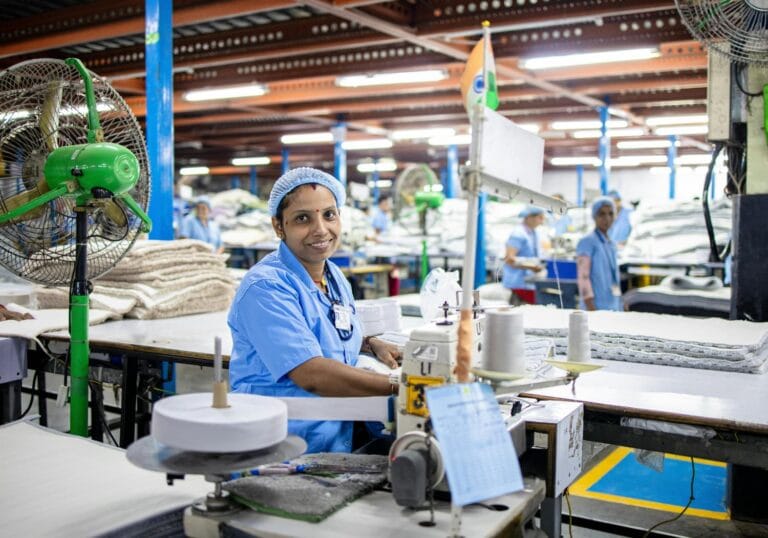Launching a Garment Stock Lot Business: A Beginner’s Guide to Success
Introduction
The global garment industry is brimming with opportunities — and one of the most overlooked yet high-potential business models is the garment stock lot business. Whether you’re a fashion entrepreneur, a trader, or a small-scale apparel wholesaler, tapping into the world of stock lots can unlock high-margin deals, low investment risk, and rapid market entry.
Yet, as with any business, success doesn’t come from luck. You need the right knowledge, strategy, and tools. In this comprehensive beginner guide to apparel sourcing, we’ll explore what a stock lot business is, where to find authentic stock lots, how to avoid scams, pricing strategies, logistics, and how SourceYourSupplier.com can become your ultimate launchpad.
Table of Contents
- What Is a Garment Stock Lot Business?
- Why It’s a Lucrative Opportunity for Beginners
- Common Stock Lot Types & Sourcing Channels
- How to Identify Genuine Stock Lots (Avoiding Scams)
- Pricing Strategies That Protect Profits
- Building Supplier Relationships for Repeat Deals
- Selling Stock Lots: B2B vs B2C vs Online
- Logistics, Documentation & Compliance
- Scaling the Business: Inventory, Branding, Platforms
- Final Checklist for New Entrepreneurs
- FAQs
What Is a Garment Stock Lot Business?
A garment stock lot business involves buying surplus, canceled, overrun, or rejected apparel stock at discounted rates from factories, brands, or exporters, and reselling them for profit.
Featured Snippet Style:
- Stock lots = Bulk leftover garments
- Source = Factory surplus, export rejections, canceled orders
- Buy low → Sell smart = Profit from inventory already produced
Many garment factories have production overruns or order cancellations. Instead of letting these clothes go to waste, they sell them in bulk as stock lots. Smart entrepreneurs capitalize on this by sourcing at a lower cost and reselling them through wholesale, retail, or e-commerce platforms.
Why It’s a Lucrative Opportunity for Beginners
- Low capital required: You can start small — even with 10–20 cartons.
- No manufacturing hassle: No production means faster turnaround.
- High profit margins: Markups can range from 50% to 300%.
- Global demand: Especially strong in Africa, Latin America, and small-town Asia.
- Flexible model: Sell online, through agents, or via local market stalls.
Internal Link: Learn how suppliers manage overstock inventory here.
Common Stock Lot Types & Sourcing Channels
Types of Stock Lots:
- Cancelled Orders (due to buyer bankruptcy or overbooking)
- Factory Surplus
- Overstock / End-of-Season Inventory
- Seconds / Slightly Defective Items
- Brand Rejections (due to minor compliance issues)
Sourcing Channels:
- Directly from garment factories
- Export houses and buying offices
- Online B2B marketplaces like SourceYourSupplier.com
- Trade fairs, stock lot dealers, and warehouse auctions
🖼️ Suggested Image: Infographic – “Top 5 Sources for Garment Stock Lots”
Pro Tip: Prioritize platforms where supplier profiles are verified to reduce risk.
How to Identify Genuine Stock Lots (Avoiding Scams)
Red Flags:
- Unrealistically low prices
- No factory address or verification
- Refusal to provide video/photo proof of stock
- Lack of documentation (packing list, origin certs)
Verification Checklist:
- Request inspection reports and past shipment records
- Use platforms like SourceYourSupplier.com to cross-check authenticity
- Look for sellers with transparent certifications and contactable references
Common Mistake: New buyers often trust WhatsApp deals from unverified sellers — leading to financial loss.
External Link: How to vet international suppliers (Forbes)
Pricing Strategies That Protect Profits
To ensure sustainability, factor in:
- Landed cost = Purchase price + shipping + duties + local transport
- Markup strategy = Wholesale (30–70%), Retail (100–300%)
- Market fit = Price based on country & customer affordability
Table: Example Profit Model for 500 pcs T-Shirt Lot
| Item | Cost (BDT) | Resale Price (BDT) | Profit (%) |
|---|---|---|---|
| Purchase Price | 60 | 100 | 66% |
| After Logistics | 75 | 100 | 33% |
Expert Tip: Diversify stock quality (mix Grade A and Grade B) for wider price appeal.
Building Supplier Relationships for Repeat Deals
Long-Term Benefits:
- Better pricing
- First access to stock
- Priority on premium lots
How to Build Trust:
- Always pay on time
- Don’t over-negotiate (show respect)
- Visit factories or set up virtual calls
- Use SourceYourSupplier.com‘s rating system to track seller history
Internal Link: Explore verified suppliers for garment stock here.
Selling Stock Lots: B2B vs B2C vs Online
Selling Options:
- B2B (wholesalers, market resellers)
- B2C (retail shops, online boutiques)
- E-commerce (Amazon, Daraz, Shopify)
Visual Suggestion: Chart – “Where to Sell Your Garment Stock Lot”
Strategy:
- Start with local buyers to reduce logistics
- Use Facebook Marketplace for fast-moving items
- Build your website/storefront for brand value
External Link: Global trends in secondhand & stock fashion (Statista)
Logistics, Documentation & Compliance
Key Docs:
- Commercial Invoice
- Packing List
- Certificate of Origin
- Export Declaration (if needed)
Logistics Tips:
- Partner with freight forwarders who handle low-volume LCL shipments
- Label cartons clearly (size, style, quantity)
- Check if stock includes any branded items that need clearance
Internal Link: Shipping checklist for garment suppliers here.
Scaling the Business: Inventory, Branding, Platforms
Growth Hacks:
- Build a buyer database
- Automate reordering via inventory tools
- Start a social media brand for your stock
- Collaborate with influencers for B2C traction
- Join garment trade networks like SourceYourSupplier.com
Branding Tips:
- Repackage items professionally
- Add value (like combo packs)
- Promote “affordable fashion with quality”
Final Checklist for New Entrepreneurs
✅ Understand types of stock lots
✅ Verify suppliers before buying
✅ Calculate true landed cost
✅ Choose your sales channels wisely
✅ Focus on repeat relationships
✅ Use trusted platforms like SourceYourSupplier.com
Conclusion
The garment stock lot business offers an exciting, scalable, and accessible entry point into the fashion trade — especially for beginners. By starting smart, staying alert, and leveraging digital platforms like SourceYourSupplier.com, you can go from a first-time trader to a reliable sourcing partner in your region.
Ready to begin? Your next stock lot deal might just be a click away.
Start your sourcing journey today — Explore Garment Stock Lots on SourceYourSupplier.com
FAQs
Q1: What’s the minimum investment to start a stock lot business?
A: You can start with as little as BDT 30,000–50,000 for a small shipment.
Q2: Is the stock lot business legal and ethical?
A: Absolutely — if you source from verified suppliers and avoid counterfeit/branded rejections.
Q3: Can I do this part-time?
A: Yes. Many traders run this business alongside full-time jobs or retail shops.
Q4: How do I ensure quality without visiting the factory?
A: Ask for detailed photos, QC reports, or use third-party inspection services.
Q5: How does SourceYourSupplier.com help me?
A: It connects you with verified stock sellers, offers listing tools, and filters for MOQ, product type, and more.
This blog is optimized with LSI keywords like: apparel liquidation, stock lot sourcing, garment surplus buying, factory overrun apparel, low-cost garment trade.



test